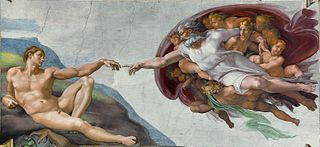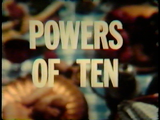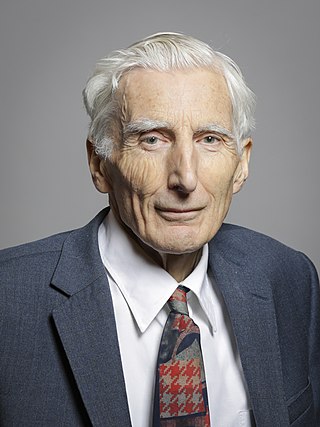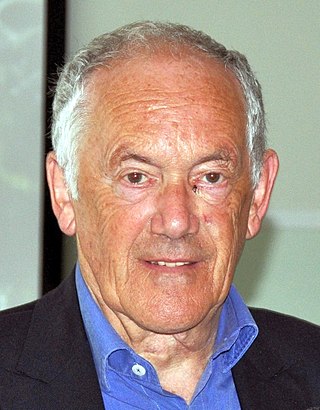Related Research Articles

Creationism is the religious belief that nature, and aspects such as the universe, Earth, life, and humans, originated with supernatural acts of divine creation. In its broadest sense, creationism includes a continuum of religious views, which vary in their acceptance or rejection of scientific explanations such as evolution that describe the origin and development of natural phenomena.

Edward Osborne WilsonFRS was an American biologist, naturalist, ecologist, and entomologist known for developing the field of sociobiology.

Sir Fred Hoyle FRS (24 June 1915 – 20 August 2001) was an English astronomer who formulated the theory of stellar nucleosynthesis and was one of the authors of the influential B2FH paper. He also held controversial stances on other scientific matters—in particular his rejection of the "Big Bang" theory (a term coined by him on BBC Radio) in favor of the "steady-state model", and his promotion of panspermia as the origin of life on Earth. He also wrote science fiction novels, short stories and radio plays, and co-authored twelve books with his son, Geoffrey Hoyle. He spent most of his working life at the Institute of Astronomy at Cambridge and served as its director for six years.

A lysosome is a membrane-bound organelle found in many animal cells. They are spherical vesicles that contain hydrolytic enzymes that can break down many kinds of biomolecules. A lysosome has a specific composition, of both its membrane proteins, and its lumenal proteins. The lumen's pH (~4.5–5.0) is optimal for the enzymes involved in hydrolysis, analogous to the activity of the stomach. Besides degradation of polymers, the lysosome is involved in various cell processes, including secretion, plasma membrane repair, apoptosis, cell signaling, and energy metabolism.
March 29 is the 88th day of the year in the Gregorian calendar; 277 days remain until the end of the year.

Uniformitarianism, also known as the Doctrine of Uniformity or the Uniformitarian Principle, is the assumption that the same natural laws and processes that operate in our present-day scientific observations have always operated in the universe in the past and apply everywhere in the universe. It refers to invariance in the metaphysical principles underpinning science, such as the constancy of cause and effect throughout space-time, but has also been used to describe spatiotemporal invariance of physical laws. Though an unprovable postulate that cannot be verified using the scientific method, some consider that uniformitarianism should be a required first principle in scientific research. Other scientists disagree and consider that nature is not absolutely uniform, even though it does exhibit certain regularities.

Biodiversity or biological diversity is the variety and variability of life on Earth. Biodiversity is a measure of variation at the genetic, species, and ecosystem level. Biodiversity is not distributed evenly on Earth; it is usually greater in the tropics as a result of the warm climate and high primary productivity in the region near the equator. Tropical forest ecosystems cover less than 10% of earth's surface and contain about 90% of the world's species. Marine biodiversity is usually higher along coasts in the Western Pacific, where sea surface temperature is highest, and in the mid-latitudinal band in all oceans. There are latitudinal gradients in species diversity. Biodiversity generally tends to cluster in hotspots, and has been increasing through time, but will be likely to slow in the future as a primary result of deforestation. It encompasses the evolutionary, ecological, and cultural processes that sustain life.

The Powers of Ten films are two short American documentary films written and directed by Charles and Ray Eames. Both works depict the relative scale of the Universe according to an order of magnitude based on a factor of ten, first expanding out from the Earth until the entire universe is surveyed, then reducing inward until a single atom and its quarks are observed.
Alexander Keewatin Dewdney is a Canadian mathematician, computer scientist, author, filmmaker, and conspiracy theorist. Dewdney is the son of Canadian artist and author Selwyn Dewdney, and brother of poet Christopher Dewdney.

John Archibald Wheeler was an American theoretical physicist. He was largely responsible for reviving interest in general relativity in the United States after World War II. Wheeler also worked with Niels Bohr in explaining the basic principles behind nuclear fission. Together with Gregory Breit, Wheeler developed the concept of the Breit–Wheeler process. He is best known for popularizing the term "black hole," as to objects with gravitational collapse already predicted during the early 20th century, for inventing the terms "quantum foam", "neutron moderator", "wormhole" and "it from bit", and for hypothesizing the "one-electron universe". Stephen Hawking referred to him as the "hero of the black hole story".

Martin John Rees, Baron Rees of Ludlow is a British cosmologist and astrophysicist. He is the fifteenth Astronomer Royal, appointed in 1995, and was Master of Trinity College, Cambridge, from 2004 to 2012 and President of the Royal Society between 2005 and 2010.

The Henry Draper Medal is awarded every 4 years by the United States National Academy of Sciences "for investigations in astronomical physics". Named after Henry Draper, the medal is awarded with a gift of USD $15,000. The medal was established under the Draper Fund by his widow, Anna Draper, in honor of her husband, and was first awarded in 1886 to Samuel Pierpont Langley "for numerous investigations of a high order of merit in solar physics, and especially in the domain of radiant energy". It has since been awarded 45 times.

Peter William Atkins is an English chemist and a Fellow of Lincoln College at the University of Oxford. He retired in 2007. He is a prolific writer of popular chemistry textbooks, including Physical Chemistry, Inorganic Chemistry, and Molecular Quantum Mechanics. Atkins is also the author of a number of popular science books, including Atkins' Molecules, Galileo's Finger: The Ten Great Ideas of Science and On Being.
John Morgan Allman is an American neuroscientist at the California Institute of Technology in Pasadena, California, active in the fields of primates, cognition and evolutionary neuroscience.

Giant petrels form a genus, Macronectes, from the family Procellariidae, which consists of two living and one extinct species. They are the largest birds in this family. The living species are restricted to the Southern Hemisphere, and though their distributions overlap significantly, with both species breeding on the Prince Edward Islands, Crozet Islands, Kerguelen Islands, Macquarie Island, and South Georgia, many southern giant petrels nest farther south, with colonies as far south as Antarctica. Giant petrels are extremely aggressive predators and scavengers, inspiring another common name, the stinker. South Sea whalers used to call them gluttons. They are the only member of their family that is capable of walking on land.
American Men and Women of Science is a biographical reference work on leading scientists in the United States and Canada, published as a series of books and online by Gale. The first edition was published in 1906, named American Men of Science; the work broadened its title to include women in 1971.
Non-overlapping magisteria (NOMA) is the view, advocated by paleontologist Stephen Jay Gould, that science and religion each represent different areas of inquiry, fact vs. values, so there is a difference between the "nets" over which they have "a legitimate magisterium, or domain of teaching authority", and the two domains do not overlap. He suggests, with examples, that "NOMA enjoys strong and fully explicit support, even from the primary cultural stereotypes of hard-line traditionalism" and that it is "a sound position of general consensus, established by long struggle among people of goodwill in both magisteria." Some have criticized the idea or suggested limitations to it, and there continues to be disagreement over where the boundaries between the two magisteria should be.

John Whittle Terborgh is a James B. Duke Professor of Environmental Science at Duke University and Co-Director of the Center for Tropical Conservation. He is a member of the National Academy of Sciences, and for the past thirty-five years, has been actively involved in tropical ecology and conservation issues. An authority on avian and mammalian ecology in Neotropical forests, Terborgh has published numerous articles and books on conservation themes. Since 1973, he has operated the Cocha Cashu Biological Station, a tropical ecology research station in Manú National Park, Peru.
In a publishing career spanning 80 years (1930–2010), popular mathematics and science writer Martin Gardner (1914–2010) authored or edited over 100 books and countless articles, columns and reviews.

The Academy of Sciences of the Institute of Bologna is an academic society in Bologna, Italy, that was founded in 1690 and prospered in the Age of Enlightenment. Today it is closely associated with the University of Bologna.
References
- ↑ "FSG, 'Scientific American' Roll Out New Imprint". PublishersWeekly.com. Retrieved 2017-12-10.
- ↑ Maione, Ian (September–October 1999). "The Honey Bee: By James L. Gould and Carol Grant Gould. Scientific American Library, New York, 1995. ISBN 0-7167-6010-X. 239 pp. Paperback". Skeptical Inquirer . Vol. 23, no. 5. p. 52. Archived from the original on 2023-05-15. Retrieved 2023-05-15– via Gale.
- ↑ Marshall, Adrian G. (August 1993). "J. Terborgh 1992. Diversity and the tropical rain forest. Scientific American Library, W. H. Freeman, New York, xii + 242 pages. ISBN 140-3213-5026-0, (Hardback). - O. T. Solbrig, H. M. Van Emden & P. G. W. J. Van Oordt (Eds). 1992. Biodiversity and global change. Monograph No. 8, International Union of Biological Sciences, Paris, iv + 224 pages. ISBN 92-9046-0799, (Paperback). - V. Shiva et al.1991. Biodiversity: Social and ecological perspectives. World Rainforest Movement, Penang and Zed Books, London. 123 pages. Hardback: ISBN 1-85649-053-X; paperback: 1-85649-054-8". Journal of Tropical Ecology. 9 (3): 385–386. doi:10.1017/S0266467400007458.
- ↑ "Stars, by James B. Kaler, (Scientific American Library, 1992), ISBN 0-7167-5033-3, 273 pages, hardcover, $24.95". Astronomy . Vol. 21, no. 6. June 1993. p. 93. Archived from the original on 2023-05-15. Retrieved 2023-05-15– via Gale.
- ↑ Pemberton, Heather (November 1993). "Exploring Planetary Worlds". CD-ROM Professional. Vol. 6, no. 6. Information Today. p. 221. Archived from the original on 2023-05-15. Retrieved 2023-05-15– via Gale.
- ↑ "Exploring Planetary Worlds: David Morrison, (Scientific American Library, 1993), ISBN 0-7167-5043-0, 238 pages, hardcover, $24.95". Astronomy . Vol. 22, no. 2. February 1994. p. 94. Archived from the original on 2023-05-15. Retrieved 2023-05-15– via Gale.
- ↑ Van Volkenburgh, Elizabeth (January 1996). "Life Processes of Plants". BioScience . 46 (1). Archived from the original on 2023-05-15. Retrieved 2023-05-15– via Gale.
- ↑ Rial, J.A. (July–August 1995). "'The gate and the key of the sciences': Mathematics: The Science of Patterns. Keith Devlin. 215 pp. Scientific American Library, 1994. $32.95". American Scientist . Vol. 83, no. 4. Archived from the original on 2023-05-15. Retrieved 2023-05-15– via Gale.
- ↑ "A Short History of the Universe". Astronomy . Vol. 23, no. 4. April 1995. p. 96. Archived from the original on 2023-05-15. Retrieved 2023-05-15– via Gale.
- ↑ Van Epen, Karen (Winter 1995). "The Emergence of Agriculture: Bruce D. Smith. Scientific American Library, 1994; 231 pp. ISBN 0-7167-5055-4. $32.95 ($35.95 postpaid)". Whole Earth Review . No. 88. p. 55. Archived from the original on 2023-05-15. Retrieved 2023-05-15– via Gale.
- ↑ Saterson, Kathryn A. (July 1998). "Conservation and Biodiversity: Andrew P. Dobson. Scientific American Library, New York, 1996. 264 pp., illus. $32.95 (ISBN 0-7167-5057-0 cloth)". BioScience . 48 (7). Archived from the original on 2023-05-15. Retrieved 2023-05-15– via Gale.
- ↑ Kreyche, Gerald F. (May 1999). "Evolving Brains by John Morgan Allman / Scientific American Library, 1999, pp. 224, $34.95". USA Today . Archived from the original on 2023-05-15. Retrieved 2023-05-15– via Gale.
- ↑ Sejnowski, Terrence J. (1999-02-19). "Evolving Brains by John Morgan Allman Scientific American Library, New York, 1999. 238 pp. $34.95. ISBN 0-7167-5076-7". Science . 283 (5405): 1121. Archived from the original on 2023-05-15. Retrieved 2023-05-15– via Gale.